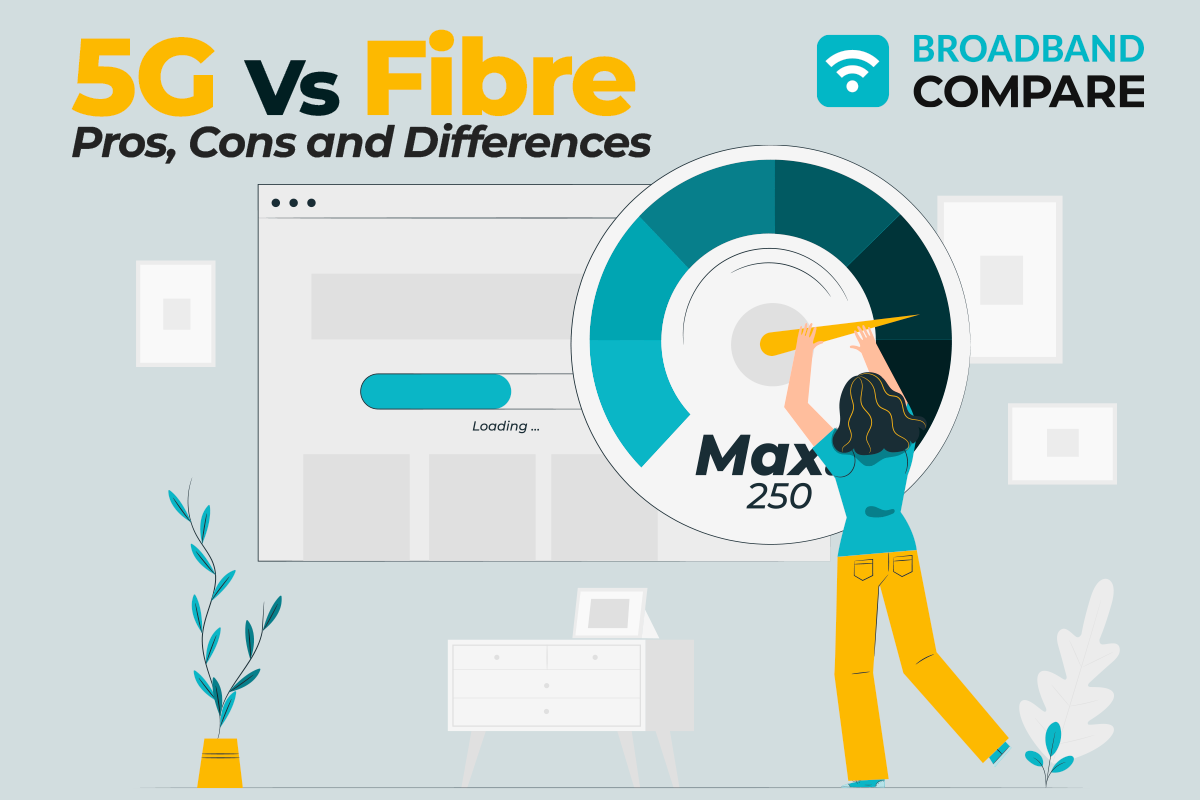
5G is the latest generation of mobile network technology, and its newest development is bringing wireless connectivity to homes. 5G works by sending signals between cell towers to your modem. It offers faster download speeds, lower latency, and ultimately, a more reliable and efficient connection than other wireless options.
Fibre broadband is a type of internet that uses fibre optic cables instead of traditional copper cables. These fibre cables use light to transmit data between devices. Fibre allows large amounts of data to be transmitted across long distances, and delivers fast upload and download speeds, lower latency, and a consistent performance.
5G uses cell towers to send and receive data, while fibre cables are made up of hundreds of tiny glass pipes that use light to transmit data.
Is 5G or fibre faster? Well, it truly depends. Both of them offer lightning-fast speeds. But fibre is generally faster than 5G. However, for those who cannot access fibre, 5G will deliver speeds fast enough for your online activities such as internet browsing and streaming.
Each 5G tower can be separated by a few hundred metres, whereas fibre cabling can stretch distances up to 70 km.
Both options have incredibly low latency. While fibre may have a lower latency than 5G, if you are rural, you’ll still be impressed by this near real-time speed for sending and receiving data! Video call and game until your heart’s content.
Fibre and 5G are both highly reliable forms of broadband. Fibre is durable against storms and delivers reliable connection. 5G works differently as there are no wires. But it provides reliability too. 5G only connects to the nearest tower so if one goes down in the area, your connection should remain intact.
While there are differences between 5G and fibre, both offer their unique benefits and no household situation is the same. 5G wireless broadband will generally suit rural households who don’t have access to fibre but who wish to enjoy the benefits of a smooth and solid connection.
Broadband Compare allows you to compare different internet providers and plans side-by-side so you can see which option and offering will suit your individual needs and interests best. You can even find the best deal and save money in the long run. Broadband Compare is free to use! You may even be able to enjoy joining perks that many providers offer, such as freebies, discounts on the first few months, and free subscriptions to streaming platforms.
To do so, follow these simple steps: